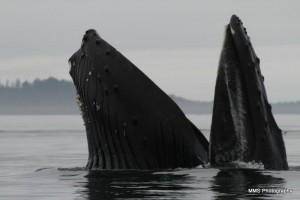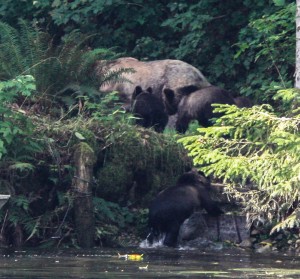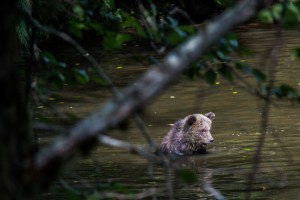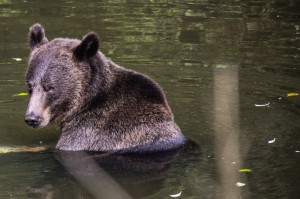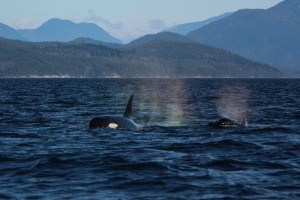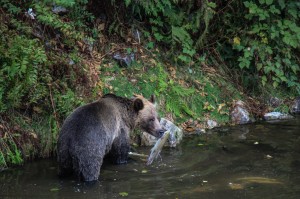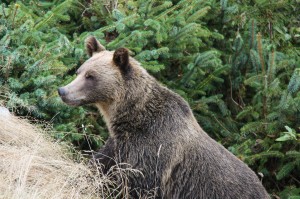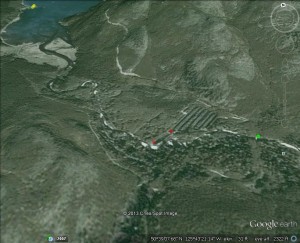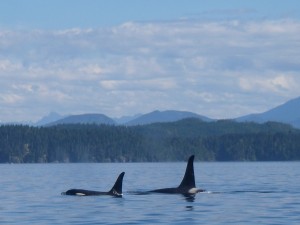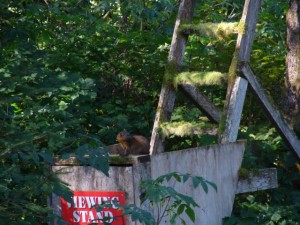
In the many years of blogging for Grizzly Bear Lodge this is the first time I have received a photo of a pine marten taken on the Glendale River. This old viewing stand is no longer in use as is demonstrated by the moss on the ladder. That is no longer in use by humans but seems to be an ideal location for the pine marten giving a good view of the river and surrounding area.
A pine marten is about half the size of a house cat, but with the shorter legs and long supple body typical of the weasel family. It has a pointed muzzle, prominent ears, and a thick, bushy tail. The basic body colour of most martens is a shade of brown, but there with a range from pale blonde through yellows, tans, reds, grays, and dark browns to nearly black. The legs and tail are darker than the rest of the body on most specimens, and most animals also have a distinctive yellow to orange “bib” patch on the throat and chest.
